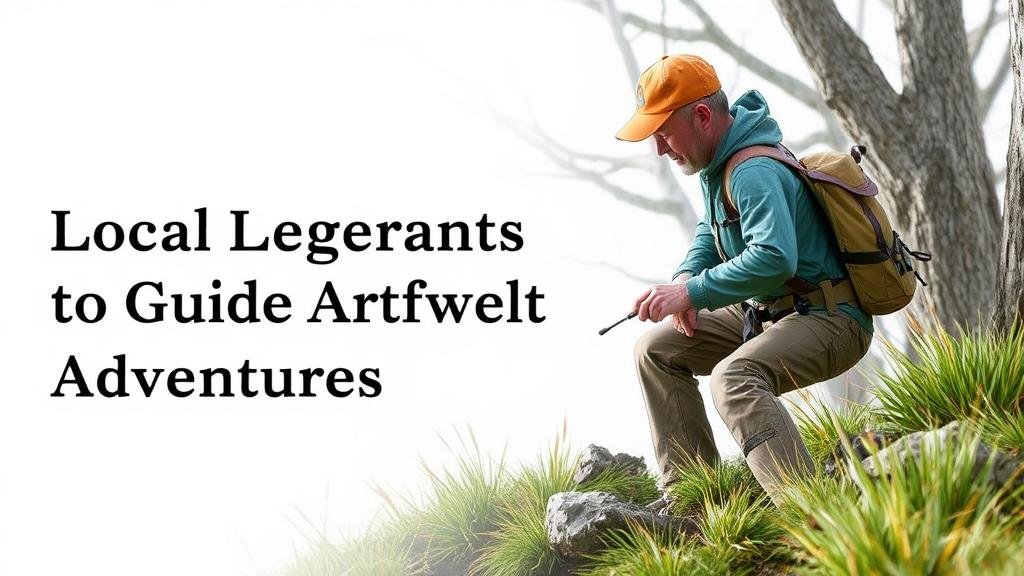How to Use Local Legends to Guide Artifact Hunting Adventures
Introduction to Local Legends and Artifact Hunting
Artifact hunting is an exhilarating pursuit that combines exploration, history, and sometimes, a bit of luck. But, one often underappreciated aspect of this adventure is the rich tapestry of local legends that can lead treasure seekers to significant finds. Local legends often provide clues about historical events, lost treasures, or forgotten civilizations, acting as compasses for those eager to uncover remnants of the past.
This article explores how to leverage local legends to guide artifact hunting adventures. We will discuss identifying legends, researching their origins, and employing them in practical hunting scenarios, supported by case studies and real-world applications.
Understanding Local Legends
Defining Local Legends
Local legends are narratives passed down through generations, often rooted in history, mythology, or cultural significance. These stories can describe extraordinary events, mythical creatures, or legendary treasures hidden within local landscapes. While some legends may have mythical origins, many are based on actual historical occurrences.
Understanding the nature of these legends is crucial. For example, the legend of the Lost Dutchman’s Gold Mine in Arizona has captivated treasure hunters for decades. This tale suggests that a hidden mine contains immense gold riches, driving many to explore the rugged terrain of the Superstition Mountains.
The Importance of Historical Context
Historical context enriches local legends, often providing tangible links to archaeological sites or potential artifact locations. For example, the legend of the burial mounds of the Native American tribes can lead researchers to significant sites where artifacts may be unearthed.
Also, folklore often reflects historical events, such as the great flood stories common in many cultures, which may guide seekers to ancient settlement areas. Understanding these contexts can make the difference between chasing mere fables and pursuing leads grounded in historical reality.
Strategies for Utilizing Local Legends
Researching Local Legends
The first step in using local legends as a guide for artifact hunting is thorough research. Engaging with historical societies, libraries, and online databases can yield valuable insights into regional stories. Also, participation in community events or folklore festivals can unearth oral histories that are not documented elsewhere.
For example, the legend of the “Tomb of the Unknown Soldier†in various localities may differ, but they all share common themes that can help pinpoint similar graveside artifacts in those areas. A historical society focused on a particular region may have primary sources or research that corroborate specific details, offering leads for further exploration.
Mapping and Scouting Locations
Once a legend is researched, the next strategy involves mapping out its associated sites. Many local legends are tied to specific geographical locations, be it caves, rivers, or old battlefields. Using tools like GIS (Geographic Information System) or traditional map reading can help hunters pinpoint target areas where artifacts might reside.
For example, the story of the Spanish Galleons’ Lost Treasure off the coast of Florida leads to particular wreck sites known for their rich historical significance. Mel Fisher, a famous treasure hunter, used local legends combined with historical documents to lead him to the wreck of the Nuestra Señora de Atocha, which netted him a treasure valued at over $400 million.
Real-World Applications and Case Studies
Case Study: The Lost City of Gold
The legend of the “El Dorado†has sparked countless expeditions into the Amazon rainforest with explorers in search of an elusive city of gold. While many have failed, the legend has led to discoveries of previously unknown civilizations, yielding artifacts that provide valuable insight into indigenous cultures. These expeditions remind us that while some legends may be exaggerated, traces of truth can often be found.
Case Study: The Curse of the Pharaohs
Another example incorporates the legend surrounding King Tutankhamuns burial. legend of the “Curse of the pharaohs†intrigued many adventurers, spurring significant archaeological ventures that unearthed thousands of artifacts, some of which provided unprecedented knowledge about ancient Egyptian civilization. This illustrates how legends can mobilize scholarly research as much as they can spur treasure hunting.
Considerations and Cautions
Ethics of Artifact Hunting
While local legends can serve as intriguing guides in artifact hunting, ethical considerations must be at the forefront. Federal and local laws often restrict artifact hunting on public lands, and respect for indigenous cultures and historical preservation is paramount. Always seek permission before conducting any excavation and consider collaborating with professional archaeologists.
Balancing Expectation and Reality
Finally, it is essential to balance expectations. Many seekers follow legends only to discover that they are based on myth rather than reality. But, even in such cases, the journey can yield educational experiences and foster a deeper appreciation of history and culture.
Conclusion
To wrap up, local legends hold valuable information that can significantly enhance artifact hunting adventures. By thoroughly researching these narratives, mapping locations, and learning from historical contexts, enthusiasts can transform their treasure-seeking efforts from mere hobbies into profound quests. Ultimately, the most meaningful discoveries may not always be gold coins or ancient relics but the stories and histories that inform our understanding of the world around us.
Actionable Takeaways
- Engage with local historians and folklore experts to collect information on regional legends.
- Use mapping tools to visualize locations related to legends and plan expeditions accordingly.
- Always consider the ethical implications of artifact hunting and prioritize preservation and legality.



